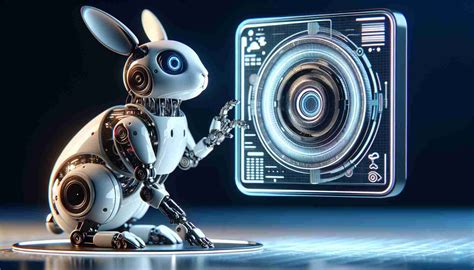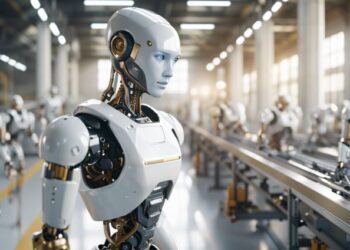The very concept of movement is being rewritten. For over a century, the rhythm of our lives has been dictated by the internal combustion engine and the principle of personal car ownership. This paradigm, however, is rapidly becoming a relic. We are on the precipice of the most profound transportation revolution in human history, a seismic shift driven by a convergence of electrification, artificial intelligence, and a bold reimagining of urban and intercity travel. The future of mobility is no longer a distant, abstract concept; its core components are being tested on our streets, in our skies, and across our digital networks today.
This isn’t merely about faster cars or cleaner fuel. It’s a fundamental restructuring of how we access opportunities, connect with communities, and design our cities. The forthcoming era of mobility promises a system that is autonomous, electric, seamlessly connected, and shared. It’s an ecosystem designed to give us back our most valuable asset—time—while creating safer, cleaner, and more efficient living environments. This comprehensive analysis will explore the powerful forces accelerating this transformation, from the silicon brains of self-driving cars to the whisper-quiet rotors of urban air taxis, and map out the interconnected future that awaits.
The Five Pillars of the Mobility Revolution
The future of how we move is not a single technology but a complex, integrated ecosystem built upon five transformative pillars. Each is a powerful agent of change on its own, but their true revolutionary potential is unleashed when they work in concert, creating a cohesive, intelligent, and user-centric network.
A. The Inevitable Rise of Electrification The deafening roar of the gasoline engine is fading, replaced by the quiet hum of electric motors. The transition to Electric Vehicles (EVs) is the foundational layer of the new mobility paradigm. Driven by environmental imperatives, government regulations, and staggering advances in battery technology, electrification has reached a critical tipping point. We’ve moved past early-adopter enthusiasm into mainstream market penetration.
The benefits are compelling and multifaceted. EVs produce zero tailpipe emissions, directly combating urban air pollution and reducing humanity’s carbon footprint. For consumers, the appeal is growing beyond environmental consciousness to include tangible benefits like lower running costs (electricity is cheaper than gasoline), reduced maintenance (fewer moving parts), and a superior driving experience characterized by instant torque and silent operation.
Innovations in battery chemistry, such as the move towards solid-state batteries, promise to eliminate range anxiety, dramatically reduce charging times to mere minutes, and improve safety. Furthermore, the development of Vehicle-to-Grid (V2G) technology will transform EVs into mobile energy storage units, allowing them to sell power back to the grid during peak demand, thereby stabilizing energy networks and providing a new source of income for vehicle owners. The electric platform is not just a new type of car; it is the essential, clean-energy canvas upon which the rest of the mobility revolution will be painted.
B. Autonomous Driving: The Dawn of the Passenger Economy Perhaps the most profound and futuristic pillar is the development of autonomous vehicles (AVs). The journey towards full self-driving capability is progressing steadily through the defined Levels of Automation, from basic driver assistance (Level 1) to full, unsupervised autonomy in all conditions (Level 5). While consumer-owned Level 4 and 5 vehicles are still on the horizon, their impact is already being felt in controlled environments like robotaxi services, autonomous trucking corridors, and last-mile delivery solutions.
The true revolution of AVs lies not in the luxury of being driven, but in the birth of the “passenger economy.” When drivers become passengers, the vehicle interior transforms from a control cabin into a mobile living room, office, or entertainment center. This recaptured time opens up trillions of dollars in potential new revenue streams, from in-car streaming services and e-commerce to mobile meetings and virtual experiences.
Moreover, autonomous technology promises a dramatic leap in safety. With over 90% of traffic accidents caused by human error, AI-powered drivers—which never get tired, distracted, or intoxicated—have the potential to save millions of lives. They can communicate with each other and with smart infrastructure instantaneously, optimizing traffic flow, eliminating congestion, and making our roads drastically safer and more efficient.
C. Mobility as a Service (MaaS): The End of Ownership? The concept of Mobility as a Service (MaaS) represents a fundamental shift in user perspective: from owning a mode of transport to simply accessing a transportation outcome. MaaS platforms are digital aggregators that integrate every conceivable mobility option into a single, user-friendly smartphone app.
Imagine opening one app to plan, book, and pay for a journey that might involve:
- An e-scooter to the train station.
- A high-speed train for the main leg of the journey.
- A pre-booked ride-hailing service to take you the final mile to your destination.
MaaS breaks down the silos between public and private transport, creating a seamless, multimodal web. For the user, it offers ultimate convenience and choice. For cities, it provides a powerful tool to manage congestion, promote public transit, and reduce the crippling demand for parking, which consumes vast amounts of valuable urban real estate. As MaaS becomes more sophisticated and cost-effective, particularly when integrated with autonomous ride-hailing fleets, it will challenge the very notion of private car ownership for a significant portion of the urban population. Why bear the cost and hassle of owning, insuring, and parking a depreciating asset when a superior, on-demand service is just a tap away?
D. Urban Air Mobility (UAM): Conquering the Third Dimension As our cities grow ever more congested, mobility innovators are looking upwards. Urban Air Mobility (UAM) promises to alleviate gridlock by opening up low-altitude airspace to a new class of vehicle: electric Vertical Takeoff and Landing (eVTOL) aircraft. Often described as “flying taxis,” these vehicles are designed to be quiet, safe, and emission-free.
Powered by distributed electric propulsion—multiple small, electric rotors—eVTOLs can operate with the quiet efficiency needed for urban environments. They can take off and land vertically like a helicopter but transition to more efficient wing-borne flight like a conventional airplane for the cross-town journey. Companies like Joby Aviation, Wisk Aero, and Eve Air Mobility are already in advanced stages of testing and certification, with the first commercial routes expected to open in major cities within the next few years.
Initially, UAM will likely serve premium routes, such as airport-to-downtown shuttles, bypassing traffic for time-sensitive travelers. As the technology matures and scales, however, the cost will decrease, potentially making aerial transit a viable and integrated component of the wider MaaS ecosystem, turning a one-hour car journey into a ten-minute flight.
E. Hyperloop and High-Speed Rail: Shrinking Continents Beyond the city, the revolution continues with next-generation intercity transit. While hyperloop technology—propelling passenger pods through near-vacuum tubes at speeds exceeding 1,000 km/h—is still in a more developmental phase, its potential is staggering. A hyperloop could reduce the travel time between major city pairs from a multi-hour drive or short-haul flight to a mere 30-40 minutes. This would effectively merge regional economies, allowing people to live in one city and work in another as if they were commuting across town.
While the engineering and infrastructure challenges of hyperloop are immense, advancements continue. In parallel, existing high-speed rail networks are expanding and becoming “smarter,” offering a proven, sustainable, and highly efficient way to connect population centers. Both technologies aim to create a world where distance is less of a barrier, challenging the dominance of short-haul aviation and creating a more connected and economically integrated society.
The Connective Tissue: AI, IoT, and V2X

Underpinning all five pillars is the invisible yet critical layer of digital connectivity. The future of mobility is a data-driven enterprise, orchestrated by Artificial Intelligence (AI) and the Internet of Things (IoT).
AI as the Master Planner: AI is the brain of the system. It will power the autonomous driving software, optimize routes for entire fleets of vehicles in real-time to avoid congestion, and manage the complex logistics of MaaS platforms. Predictive AI will anticipate travel demand, allowing public transit agencies and ride-hailing companies to dynamically allocate resources where they are needed most.
IoT and Sensor Fusion: Every vehicle, traffic light, parking space, and piece of infrastructure will be embedded with sensors, creating a vast Internet of Things. This network will generate a torrent of real-time data about traffic flow, weather conditions, accidents, and road hazards.
V2X Communication: This is where the data becomes action. Vehicle-to-Everything (V2X) communication allows vehicles to talk to each other (V2V), to infrastructure like traffic signals (V2I), and even to pedestrians via their smartphones (V2P). A car approaching an intersection will know that another car, hidden by a building, is about to run a red light. A traffic signal can tell an approaching fleet of AVs to slow down to time their arrival for a green light, avoiding unnecessary stops. This constant, high-speed dialogue creates a cooperative, hive-mind-like awareness on the roads, enhancing safety and efficiency far beyond the capabilities of any single vehicle.
Challenges on the Road Ahead
The path to this revolutionized future is not without significant obstacles. The technological hurdles, while substantial, are often more straightforward to solve than the societal and regulatory challenges.
- Regulation and Legislation: How is liability assigned when an autonomous car is involved in an accident? How will cities regulate the flight paths and noise levels of UAM vehicles? Governments are struggling to create legal frameworks that can keep pace with the speed of innovation.
- Infrastructure Investment: Realizing this vision requires massive investment in 5G/6G connectivity, a robust EV charging network, modernized public transit systems, and smart road infrastructure.
- Cybersecurity and Data Privacy: A connected transportation system is a potential target for cyberattacks. Securing the network and protecting the vast amounts of personal location and travel data it generates is a paramount concern.
- Public Acceptance and Equity: People must trust the technology enough to ride in a driverless car or an autonomous aircraft. Furthermore, there is a significant risk that these new services could exacerbate social divides if they are not deployed equitably, leaving lower-income or rural communities behind.
A Journey Just Beginning

The transformation of mobility is a story of convergence. It is the convergence of bits and atoms, of artificial intelligence and physical machinery, of private innovation and public need. We are moving away from a disconnected, inefficient, and polluting system of the past and towards an integrated, intelligent, and sustainable network of the future. The changes will be gradual, then sudden. One day, owning a car will feel as anachronistic as owning a horse for daily travel. The revolution in motion is not just about getting from A to B; it’s about fundamentally reshaping our world for the better, creating cities that are for people, not cars, and a transportation system that is safer, cleaner, and liberating for all. The future is not just coming soon; it is already pulling up to the curb.













